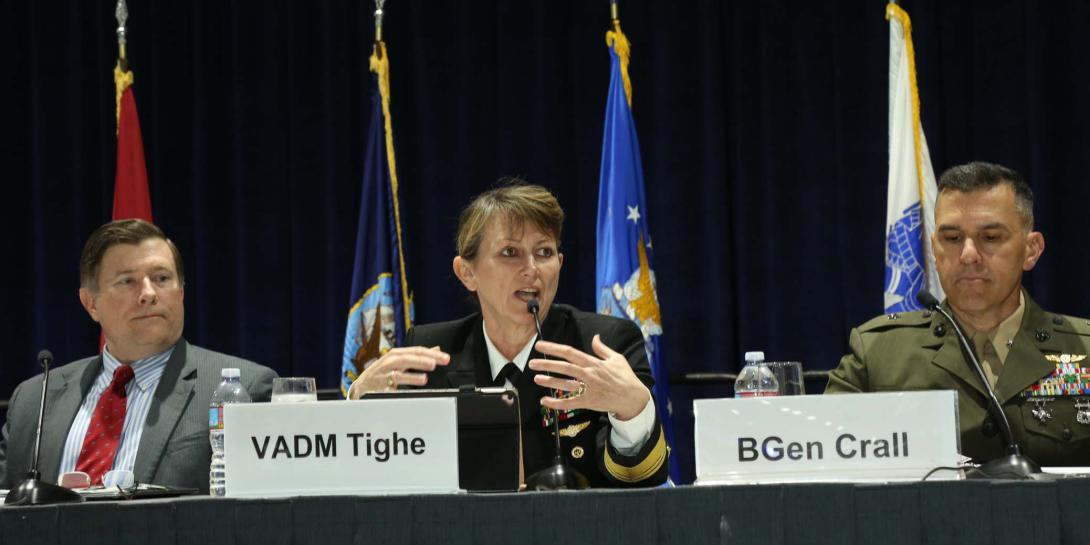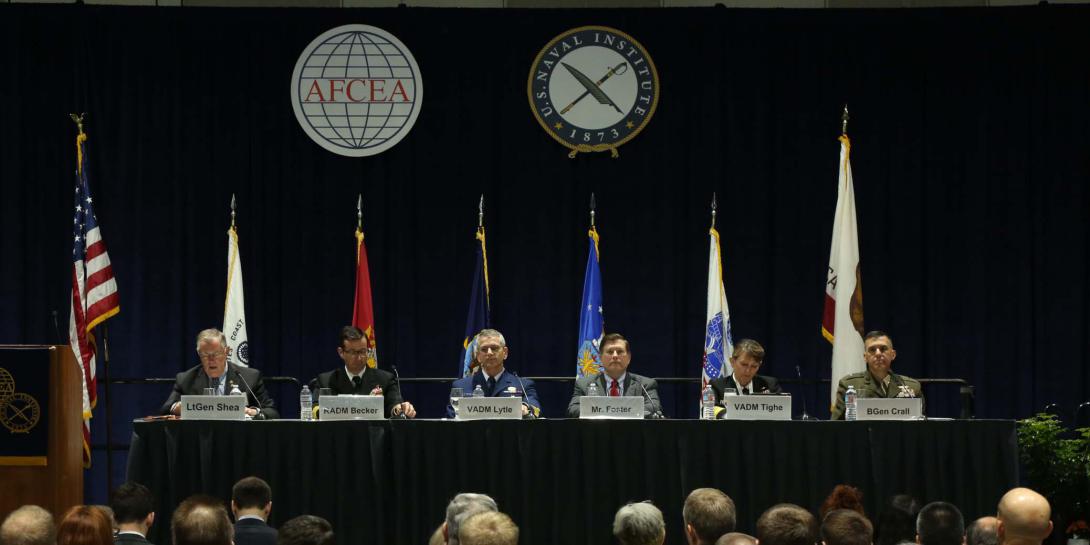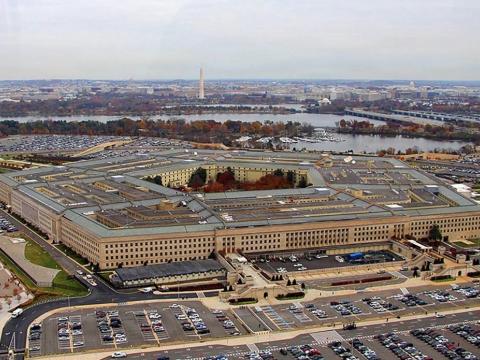Information Warfare: What is It?
Information warfare is an aggressive game of soccer where not only are all the fans on the field with the players, but no one is wearing uniforms. Unlike the dominance the U.S. military enjoyed for years in the conventional warfare realm, the lack of physical and geographic boundaries in cyberspace test modern warfighting doctrine, said Vice Adm. Marshall Lytle III, USCG, during a panel discussion at the West 2017 conference, co-sponsored by AFCEA International and the U.S. Naval Institute and taking place this week in San Diego.
Information warfare is an aggressive game of soccer where not only are all the fans on the field with the players, but no one is wearing uniforms.
#Cyberwarfare is like a soccer game with all the fans on the field with you & no one is wearing uniforms, Vice Adm. Lytle #WEST2017
— Sandra Jontz (@jontz_signalmag) February 22, 2017
Such was the poignant analogy offered Wednesday by Vice Adm. Marshall Lytle III, USCG, director, command, control, communications and computers/cyber and chief information officer for the Joint Staff/J-6.
Unlike the dominance the U.S. military enjoyed for years in the conventional warfare realm, the lack of physical and geographic boundaries in cyberspace test modern warfighting doctrine, he offered during a panel discussion at the West 2017 conference, co-sponsored by AFCEA International and the U.S. Naval Institute and taking place this week in San Diego.
2 elements needed for success in information warfare: qualified personnel and assured communications says Vice Adm. Lytle - #WEST2017
— Sandra Jontz (@jontz_signalmag) February 22, 2017
The art and science of information warfare is evolving so rapidly, it is difficult to pin down solutions, much less a conclusive definition between the various military services, offered Lt. Gen. Robert Shea, USMC (Ret.), president and CEO of AFCEA International and the panel moderator.
However, six categories can help define the purpose behind information warfare and help streamline the confusing and emerging military domain, offered Brig. Gen. Dennis Crall, USMC, director of command, control, communications, computers and the Corps’ chief information officer.
Those six categories include:
- Assured command and control: Making sure commanders have ability to fight with their systems and networks at their time of choosing. “That assurance is driving most of what we do,” he said.
- A foundational idea of awareness: Understanding the information environment is a key endeavor.
- Attack and exploit: Whether it be networks, systems or information itself.
- Influence: Simply understanding cognitive domain is not enough. “You have to do something about it. The ability to influence our adversaries … is critical.”
- Deceive: The military must be able to practice deception. “We don’t need to be afraid of the word,” Gen. Crall said. “In fact, I was accused once by someone who was so disturbed by it, they equated it to lying. Spot on. That’s exactly what it is.”
- The ability to control information activities, capabilities and resources.
There still an institutional hesitancy to rely on information warfare more than the others, says Brig Gen Crall at #WEST2017
— Sandra Jontz (@jontz_signalmag) February 22, 2017
The U.S. Marine Corps is going through an operational endeavor now to bring information warfare to the service at the Marine Air-Ground Task Force level, Gen. Crall said.
Each of the services has faced difficulty in integrating many kinds of related but separate capabilities, with each approaching the meshing a little differently based on their missions, offered Vice Adm. Jan Tighe, deputy chief of naval operations for information warfare and director of naval intelligence. “It makes sense that each service would be looking at information warfare slightly differently,” she said.
The U.S. Navy has aggravated capabilities into three pillars: battle space awareness; assured command and control; and integrated fires.
Navy leaders require the ability to meaningfully sense, articulate and be able to predict the maritime environment to support the joint fight.
“Central to our ideas about battle space awareness, assured command and control and integrated fires is the idea of maneuvering,” Adm. Tighe said. “It’s not a static situation. We’ve got to be able to maneuver in the electromagnetic spectrum when faced with an adversary. We’ve got to be able to maneuver within cyberspace. For some folks, the notion of maneuvering in a network or maneuvering in the electromagnetic spectrum is kind of a new idea. But that has been built into the way forces and fleet operations are working toward to be able to take full advantage of the spectrum and take it to the fight.”
'We have to be able to maneuver in the electromagnetic spectrum,' says Vice Adm. Tighe. #WEST2017
— Sandra Jontz (@jontz_signalmag) February 22, 2017
Doctrine aside, getting to a cohesive end state is difficult if not impossible without a talented work force behind any initiative, said Robert Foster, the Navy's chief information officer. The service is pulling in talent from within, training a new work force and implementing the proper incentives to recruit and retain key talent. "We have to poach faster than those poaching from us," Foster said.
.@USNavy #CIO working on civilian work force incentive plans to 'poach faster than those poaching from us,' says Robert Foster #WEST2017
— Sandra Jontz (@jontz_signalmag) February 22, 2017






Comment
Naval Information Warfare
Having been a plank owner of the original Naval Information Warfare Activity, AOIC of its first detachment and an Electronic Warfare Test Director, I have seen our information warfare capabilities grow and prosper. However, the "bad guys" are getting better and we have to keep up. It is a much larger battleground now. The men and women on Naval Information Warfare are always ready and willing to "Get the Job Done"
Comments